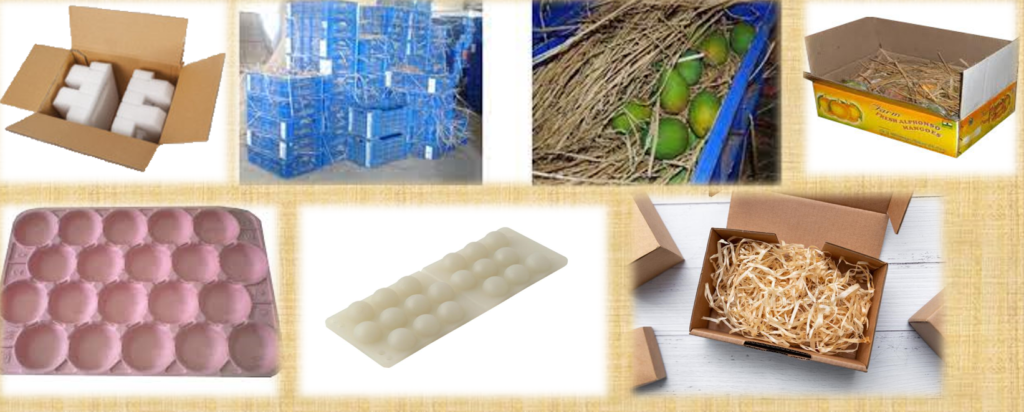Cushioning materials for packaging fruits and vegetables
The function of the cushioning material is to stabilize the objects inside the package and prevent them from mixing into each other in the package when vibration or impact occurs. Some cushioning materials can also provide additional strength to the package.
Watch Lecture Video
The cushioning material used varies with the product. The cushioning materials used for the packaging of fruits and vegetables are mostly dry grass, paddy husk, leaves, sawdust, pieces of paper, etc., which are easily available locally and are less expensive. These are unhygienic and do not allow breathable heat to escape from the packing box.
For a cushioning material to be useful, in addition to having flexible properties, it must also have the ability to dissipate the heat of respiration of the product. It should be free from infection. It is important that the cushioning material should be physically inert.
More recently, fiberboards (single or double-wall), molded paper pulp trays, molded foam polystyrene trays, molded plastic trays, foam plastic sheets, plastic bubble pads, finely chopped wood, plastic film liners or bags, etc. have been used in expensive items and export material for replacing cushioning material.
The purpose using cushioning materials:
- To protect products that are sensitive to mechanical stress and to be protected from damage due to impact, shock, or vibration.
- The fragile items of the container such as ceramic, glass, porcelain are protected from mechanical stress by the cushioning material
- To accommodate packages to standard sizes as they act as adapters between non-standard package materials and packaging
Mode of action:

They absorb a part of the kinetic energy when the package is impacted or dropped and increase the braking distance of the packing containers.
Properties of cushioning material:
1) Recovery: If the recovery is too short, the braking distance is increased when the stress is continuously exposed, as a result of which the kinetic energy may no longer be sufficiently absorbed and the packaging material may be damaged.
2) Insensitive to climatic conditions: High expected humidity causes significant changes in humidity, direct solar radiation, and temperature. Such exposure should not damage the cushioning material.
3) They should not be hygroscopic and should not promote corrosion.
4) The use of cushioning material should be effective, simple, eco-friendly, and cost-effective.
